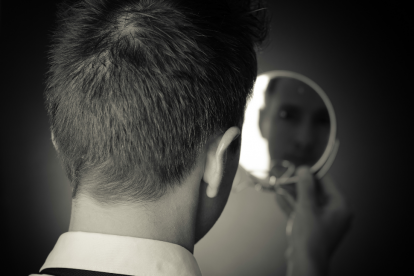Is Bipolar Disorder in Women Different Than in Men?

Mental illness exists across demographics, but not all demographic groups experience these conditions in the same way. A growing body of evidence is now showing that bipolar disorder is deeply affected by biological sex, which has significant implications for diagnosis and treatment. By exploring how bipolar disorder in women differs from bipolar disorder in men, you can come to understand the importance of taking sex into account in treatment.
There was a time when mental health disorders were so heavily stigmatized that they were rarely spoken of in public. This silence led to deep suffering for those struggling with these illnesses and perpetuated damaging myths about psychiatric conditions. Today, however, new conversations are opening up about the realities of mental health disorders in an attempt to break through harmful mythologies and urge people to get the help they need, free from shame or stigma.
One of the primary messages behind much of the public discourse on mental illness is the fact that no one is immune and these disorders exist across demographics. In many ways, this is true. However, deeper investigations show that a number of demographic features, including sex, play a critical role in the prevalence of mental health disorders. Women, for example, are more likely to experience depression and anxiety disorders, while men are more likely to develop schizophrenia. These sex differences speak to both differences in biology and lived experience brought on by cultural and environmental forces.
One illness whose prevalence has historically been considered immune from sex differences, however, is bipolar disorder. In some ways, it was considered a truly equal opportunity condition, affecting men and women in equal numbers. But as the mental health community has come to expand its understanding of what constitutes bipolar disorder, we now know that there are disparities in prevalence between women and men. More importantly, there is increasing recognition that men and women experience bipolar disorder differently, experiences which have important implications for both diagnosis and treatment. By examining the ways that bipolar disorder in women is different than that in men, you may come to understand your own symptoms more fully and gain greater insight how to heal.
Bipolar Disorder in Women: Understanding Sex Differences
There are a number of important features that distinguish how women experience bipolar disorder vs. how men experience it and these differences must be accounted for in order to fully recognize bipolar disorder symptoms and create meaningful treatment experiences:
Onset
The age of onset is typically later for women than it is for men.
Depressive Episodes
Women are more likely than men to experience depressive episodes in the course of their illness and depression tends to be the predominant feature of the illness. In fact, 75% of women with bipolar disorder present with depression at the onset of the illness compared to 67% of men, and this depression tends to be more intense and last longer. This likely helps to explain why women are significantly more likely than men to be misdiagnosed with unipolar depression and subsequently treated with antidepressants. The high rate of misdiagnosis is alarming because it not only delays correct treatment, but because antidepressants are generally considered to be inappropriate for people with bipolar disorder due to both inefficacy and the risk of triggering mood switching. Both the prevalence of depression and misdiagnosis may also partially explain why women with bipolar disorder are significantly more likely than men to attempt suicide.
Bipolar II
Bipolar II disorder, which is defined as cycling between depression and hypomania, is more common amongst women, with some estimating that women are a full 50% more likely than men to experience the condition. Mood switching is an inherent feature of bipolar II and people with this condition generally tend to have more frequent and more severe depressive episodes than people with bipolar I, which does not always result in depressive episodes. This may also help to explain the higher suicide rate among women; people with bipolar II disorder are known to attempt suicide more frequently than bipolar I due both to the presence of depression and because more mood instability (switches between depression and mania or hypomania) is associated with higher suicide rates.
Mixed Mania
Some studies suggest that women are more likely than men to experience mixed mania, a state in which both depressive and manic symptoms are present simultaneously.
Rapid Cycling
Women are nearly twice as likely as men to experience rapid cycling, which means that they have four or more mood episodes per year. This augmented intensity of instability and frequency of mood switching can be deeply distressing, complicate treatment, and is associated with higher suicide rates. Some evidence suggests that the rapidity of cycling may be due in part to the fact that women are more likely to be prescribed antidepressants due to their more prevalent and severe depressive symptoms. Unfortunately, people who experience rapid cycling are at higher risk for treatment resistance, complicating the treatment process.
Seasonal Effects
Women are more likely than men to have seasonal features to their bipolar disorder. More specifically, women are more likely to have depressive episodes in the fall and winter than in the spring and summer.
Sleep
Sleep disturbances appear to be more likely to cause mood disturbances in women than men, and sleep patterns and quality seem to also be impacted by sex differences. The exact reasons for these differences are unknown, but it is clear that it is particularly important to identify and prevent disrupted sleep in women in order to help stabilize mood.
Hormonal Effects
Hormones are known to have a significant impact on mental health and this may be particularly true in bipolar disorder. The cyclical fluctuations women experience throughout their menstrual and reproductive cycles have been found to impact the severity of bipolar symptoms. As Sonia Parial writes, “Bipolar mood disorder may worsen during certain phases of the female reproductive cycle, particularly postpartum, but also during the premenstrual phase of menstrual cycle, peri-menopause, and menopause.” In particular, many women experience premenstrual depression and up to 70% of women with bipolar disorder report “premenstrual exacerbation of their symptoms.” These mood disturbances may constitute premenstrual dysphoric disorder, which is traditionally treated with antidepressants when there is no co-occurring bipolar disorder. However, antidepressant treatment may trigger mood switching and have questionable efficacy in people with bipolar disorder, which means that such treatment is not advisable in these cases. Additionally, hormonal birth control may impact bipolar symptoms.
Pregnancy also presents unique risks for women with bipolar disorder. Not only must bipolar symptoms be safely managed during pregnancy, potentially requiring significant treatment changes, the hormonal shifts during and after pregnancy can trigger both onset and relapse of bipolar disorder. The postpartum period may be a particularly vulnerable time, with a full 36% of bipolar women reporting onset and up to 40% reporting relapse in the six weeks following birth. Postpartum psychosis is also a significant risk and observed in up to 30% of women with bipolar disorder. Experiencing postpartum psychosis increases the risk of “recurrent affective episodes.”
Menopause and age-related loss of estrogen can also have serious implications for bipolar disorder in women. Perimenopausal and postmenopausal women often experience an intensification of mood symptoms, particularly depression. This is especially true in women who are not using hormone replacement therapy. Additionally, thyroid dysfunction can have a significant impact on bipolar disorder and women are much more likely than men to experience thyroid conditions. Elevated thyroid levels are associated with mixed episodes while subclinical hypothyroidism is associated with rapid cycling.
Co-Morbidity
People with bipolar disorder often experience co-occurring conditions that may affect and are affected by bipolar disorder itself. In women, anxiety, eating disorders, post-traumatic stress disorder (PTSD), and borderline personality disorder are more common than in men. Meanwhile, men are believed to be more likely to have a co-occurring substance use disorder. However, one study by the Stanley Foundation Bipolar Network found that women are more likely than men to experience a co-occurring alcohol use disorder. Overall, women with bipolar disorder are significantly more likely than women in the general population to abuse substances, despite their overall level not reaching that of men with the same disorder.
Sexual Violence
Women with bipolar disorder are more likely to have experienced sexual abuse than men. While this may in part reflect general higher rates of sexual victimization, it has important implications for the onset and course of the illness; sexual abuse is associated with an earlier age of onset and more suicide attempts. Additionally, women with bipolar disorder are at heightened risk for sexual violence.
Impact
Bipolar disorder can be deeply disruptive and have a damaging impact on functionality and quality of life both men and women. However, researchers have found that women “report significantly more disruption in social/leisure life,” suggesting that there are meaningful experiential differences between men and women. These disruptions are important to address in treatment in order to help women with bipolar disorder fully heal and restore both functionality and overall quality of life. Furthermore, women are more likely to be hospitalized than men, although this may be due in part to the higher willingness to seek treatment.
Taking Sex into Account in Treatment
The differences between bipolar disorder in women vs. men have important implications for what the condition looks like, how it is diagnosed, and how it is treated. As such, it’s important to work with a treatment provider who is well-versed in these differences. This process must begin with an in-depth psychological assessment in order to gain insight into your full range of needs and the assessment process must be informed by an understanding of the unique experiences women have with bipolar disorder. For example, it is critical to differentiate between unipolar depression and a bipolar depressive episode and clinicians should be aware of the heightened risk of misdiagnosis faced by women with bipolar disorder. Additionally, hormonal factors, including thyroid disease, should be considered and addressed, which may involve liaising with physicians to find effective interventions.
With a complete understanding of your condition, your treatment provider should then create a personalized treatment plan designed to effectively target your individual symptoms in a way that is meaningful to you. This may include modulating treatment to address seasonal and hormonal fluctuations, tailoring pharmacological therapy to minimize the risk of rapid cycling, a stronger focus on treating depressive symptoms, promoting good sleep hygiene, and treating co-occurring conditions. While medication will play a significant role in the treatment process, it is also critical to address your symptoms and the impact of these symptoms in psychotherapy.
Due to variations in symptomatology and lived experience, women may have different goals and challenges than men and gaining insight into these goals and challenges is essential in order to augment self-awareness and create effective coping strategies for moving forward. The relationship between bipolar disorder and reproductive health, for example, may be a particularly difficult area of struggle for women and it’s imperative that your treatment provider recognizes this struggle. Likewise, experiences of sexual trauma should be addressed in order to begin the healing process and prevent the residual effects of these experiences from interfering with recovery from bipolar disorder. Regaining social function and improving interpersonal relationships may also be heightened priorities for women.
For many, residential treatment programs are particularly useful for beginning this process. In the comfort of a serene, private facility, you can rapidly form strong working relationships with clinicians and begin to safely explore your goals and experiences. The immersive nature of these programs means that you will have ample opportunity to address the multifaceted nature of your disorder in order to create rapid and lasting relief. Here, you can devote yourself fully to your recovery, free from the stresses of everyday life, and finally break down the barriers to healing. This may be particularly important for women who do not feel that their needs have been fully met in other types of treatment or who have struggled with treatment resistance.
Bipolar disorder can be a deeply troubling condition for anyone. However, women face unique challenges when it comes to both living with and recovering from the condition. By working with clinicians who have the expertise necessary to overcome these challenges with dignity and grace, you can participate in a truly transformative and empowering treatment experience that opens up a path to greater stability and joy.
Bridges to Recovery is a residential treatment center for bipolar disorder and other mental health disorders. Contact us to learn more about our renowned Los Angeles programs and how we can help you or your loved one start the journey toward healing.






